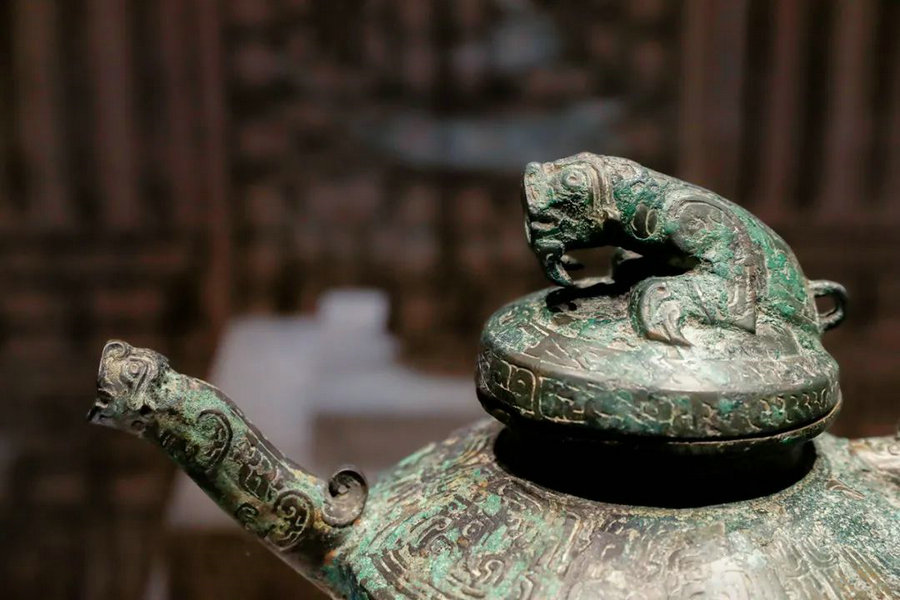

A 3,000-year-old bronze vessel is now on show in Harbin, Heilongjiang province, at Hu Ying: New Age, Different Fate, an exhibition lasting through April 1. The artifact was added to the National Museum of China's collection and was displayed for public viewing in 2018. The object stands as a fine example of the casting of ceremonial bronzes in ancient China and relevant rituals and hierarchy of the time.
Known as Hu Ying (tiger vessel) because of the tiger-shaped handler on its lid, the ware used to be kept at the royal court of the Qing Dynasty (1644-1911). It was looted when foreign forces raided and burned down the Old Summer Palace in Beijing in 1860. Decades later, it appeared at a London auction and, through rounds of negotiation, was returned to its birthplace.
Also on display at the Harbin show are dozens of bronzes from the time period when Hu Ying was made, between the late Western Zhou Dynasty (c.11th century-771 BC) and early Spring and Autumn Period (770-467 BC), giving a broader perspective of the artistic features and technical refinement of the archaic bronzes.
There are photos, drawings and documents showing the history of the Old Summer Palace, the adversities it experienced and why the return of Hu Ying and other looted artifacts is important. The exhibition at Harbin Museum is the first stop of a national tour.